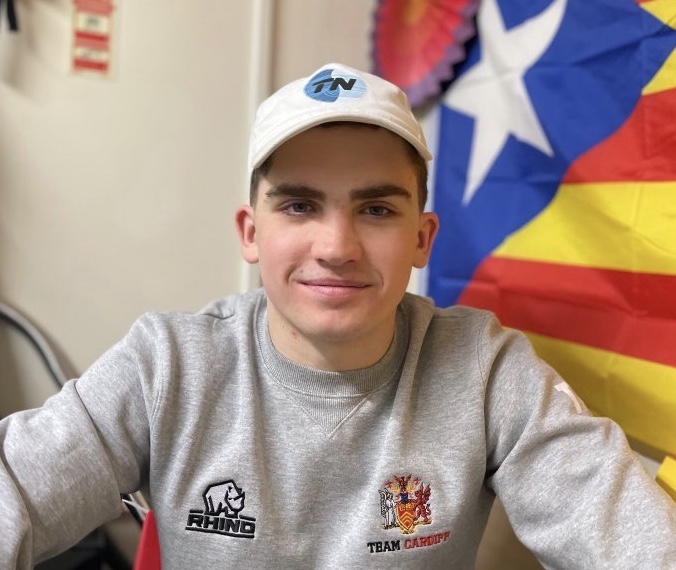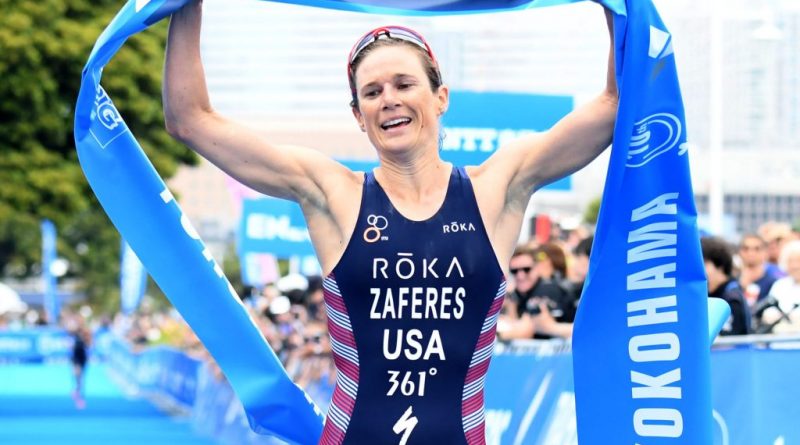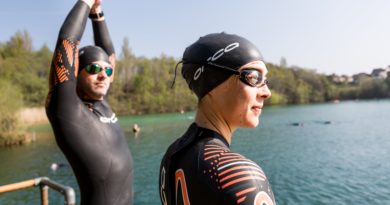The USA – An Olympic Distance Powerhouse?
Tokyo 2021
With the “400 day to go” mark until Tokyo 2021 surpassed earlier this week, I want to look ahead at the chances of a triathlon nation that has really made its name since the Rio Olympic Games. Over the past five Olympic Games, one of the world’s leading sporting nations has only managed to account for two of the thirty medals in Triathlon, with both coming in the women’s event. However, with the emergence of some outstanding talents, and the introduction of the Mixed Team Relay in Tokyo, I believe the USA are one of only two nations with a chance of winning three gold medals. Over the course of this article I am going to break down why the USA is just so powerful and where these medals are likely to come from.
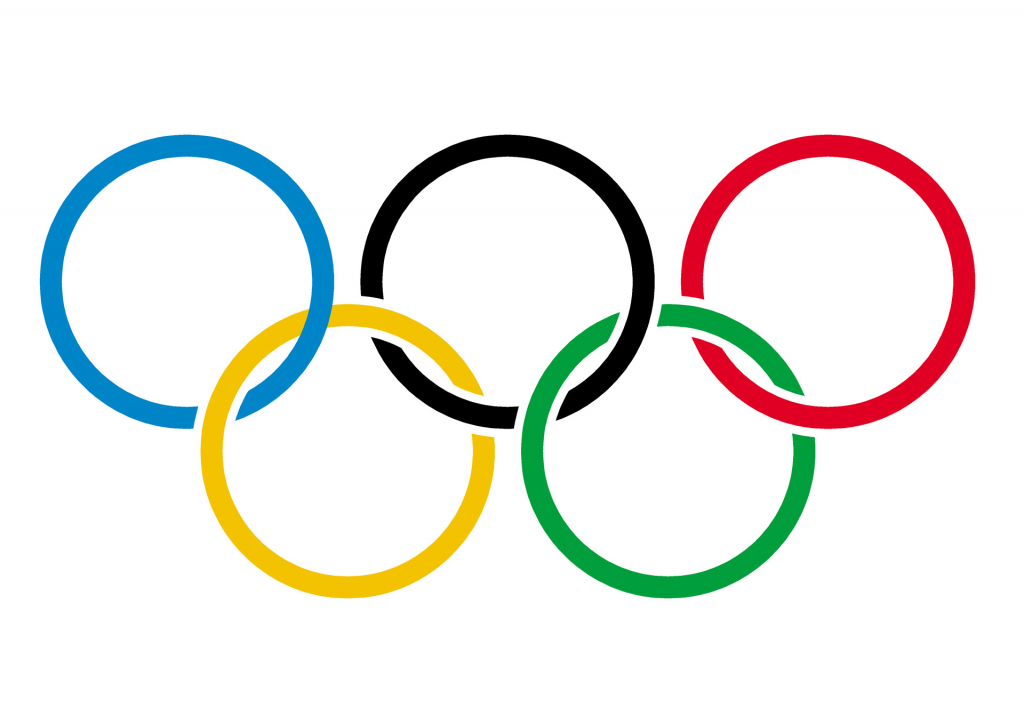
The Men’s Race:
With the women’s team selection for the USA difficult enough to scare anyone, many people have overlooked the strength in depth of the American men. Selecting three men to fly the star-spangled banner will be a tough job, so don’t be surprised to see some big-name omissions from the team.
Firstly, the Rio Olympian and USA Team stalwart Ben Kanute has the capacity to change the course of a bike leg and his impressive range from Ironman 70.3 to Super League racing makes him the perfect athlete to pick with the mixed team relay in mind. Whilst he potentially isn’t a podium contender, he may be used in a domestique role to work for some of the team’s stronger runners. This dynamic worked very successfully in 2012 and 2016 for the Brownlee brothers with Stuart Hayes and Gordon Benson respectively doing a good job in working for them on both occasions.
Next, I am certain that star runners and top ranked WTS Americans Matthew McElroy and Morgan Pearson will be hard to overlook as both have shown their pedigree with World Cup podiums in 2019, especially McElroy who as well as winning three consecutive ITU World Cups also outsprinted Javier Gomez to podium at Leeds WTS. With both athletes seeming to be exponentially improving and having also raced well in the heat at the Santa Domingo World Cup, I am tipping one of them to be a Gold Medal prospect in Tokyo. Their ethos and approach to racing and training strikes a different chord to the regular ITU racers, with a refreshing blend of childlike optimism and a true affinity for hard work making a dangerous combination which could lead them to unexpected Olympic glory. Interestingly, both are products of USATF’s approach of recruiting pure swimmers/runners out of Division I colleges. Morgan Pearson is an alumni of the fabled Colorado Buffs program and McElroy was a product of the NAU team that recently secured an unprecedented three peat in the NCAA XC Championships.
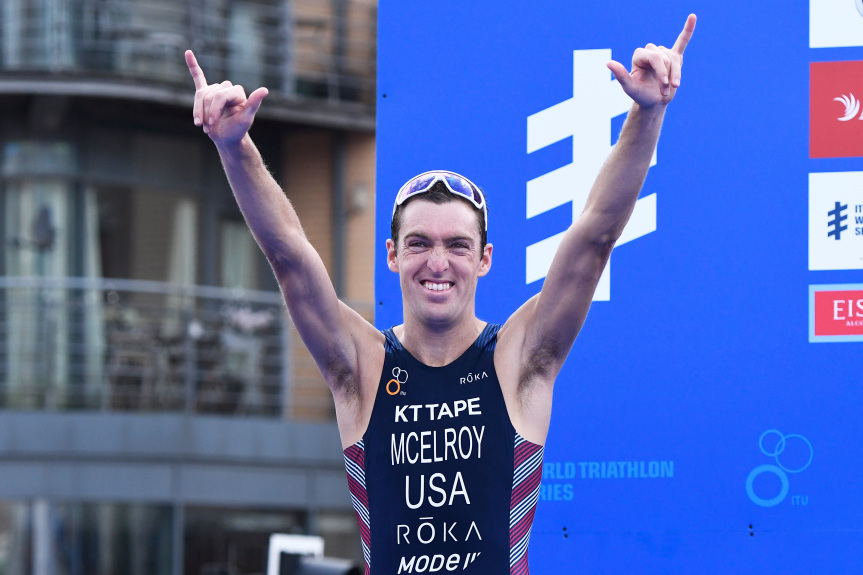
Whatever you may have concluded from the information previously presented, the three Olympic berths are far from guaranteed for the above athletes. The strength in depth on the men’s side is so extraordinary, that it is incredibly likely that three 2019 World Cup podium placers will miss out on the Olympic team, but who? Eli Hemming, who in 2019 won the Tiszaujvaros WC and was second behind McElroy in the Miyazaki WC could challenge Ben Kanute for the domestique position, especially as he is a teammate of McElroy’s in the Origin Performance Squad. Kevin McDowell, who survived Hodgkin’s Lymphoma in his last year of high school and was the third-place finisher in the US’s clean sweep at the Santa Domingo WC should also not be ruled out. His experience of racing at a high level and strong bike-run ability could help him edge past Pearson in a decision between the two. Lastly, Tony Smoragiewicz finished second behind Alex Yee at the Cape Town WC and along with Seth Rider, Austin Hindman and William Huffman has an outsider’s chance of making the team.
With Matt McElroy being a true Gold Medal contender, I believe he is the only athlete who has cemented his spot on the team. The other two berths are up for grabs and the remaining men are going to have to work hard to make the team. Expect Ben Kanute to fight until the very end for a place and Morgan Pearson’s inexperience to perhaps count against him in a shootout for a spot against McDowell.
The Women’s Race:
There is only one word to describe the US teams female pool of athletes – stacked. The main difference between the men and women’s teams are that whilst the men have a potential gold medal winner, the women have four, and that’s without even taking into account Gwen Jorgenson, the 2016 Olympic Champion who has moved on to the track.
Firstly, Katie Zaferes is the most talented female triathlete on the circuit. She has not only dominated the WTS Series with second in 2018 before becoming World Champion in 2019, she has also shined in the Super League, winning last year’s overall series. After being recruited from Syracuse, she has developed into an unmatched all-rounder who can win any type of race. Her continued improvement and attention to detail that she showed when turning 2018’s silver to gold last year is what makes her the overwhelming favorite for Tokyo in my eyes. Increasing her chances of success in Tokyo is her husband Tommy Zaferes, who as a former pro now acts as Katie’s main training partner. Zaferes seems to be taking a leaf out of Jorgenson’s book, who utilized her husband Patrick Lemieux’s support role in her training in the buildup to Rio successfully, and to which she attributes a large proportion of her achievements.
Next are the three athletes who I believe are medal contenders and, on their day, could win gold if a few factors fall in their favor. Whilst Summer Rappaport and Kirsten Kasper have shown their ability in several WC and WTS podiums over the past few years, it’s Taylor Spivey who in 2019 really threw her hat in the ring with a number of stellar performances, including a Top 10 finish in every WTS event she raced in 2019, including podiums in Yokohama and Abu Dhabi. Her consistency is rivalled only by Zaferes and led to her taking 4th in the overall WTS standings for last year. Spivey has also shown her ability to race the mixed team relay with a solid leg at the Abu Dhabi mixed team relay WTS and several strong performances in the shorter and punchier Super League events.
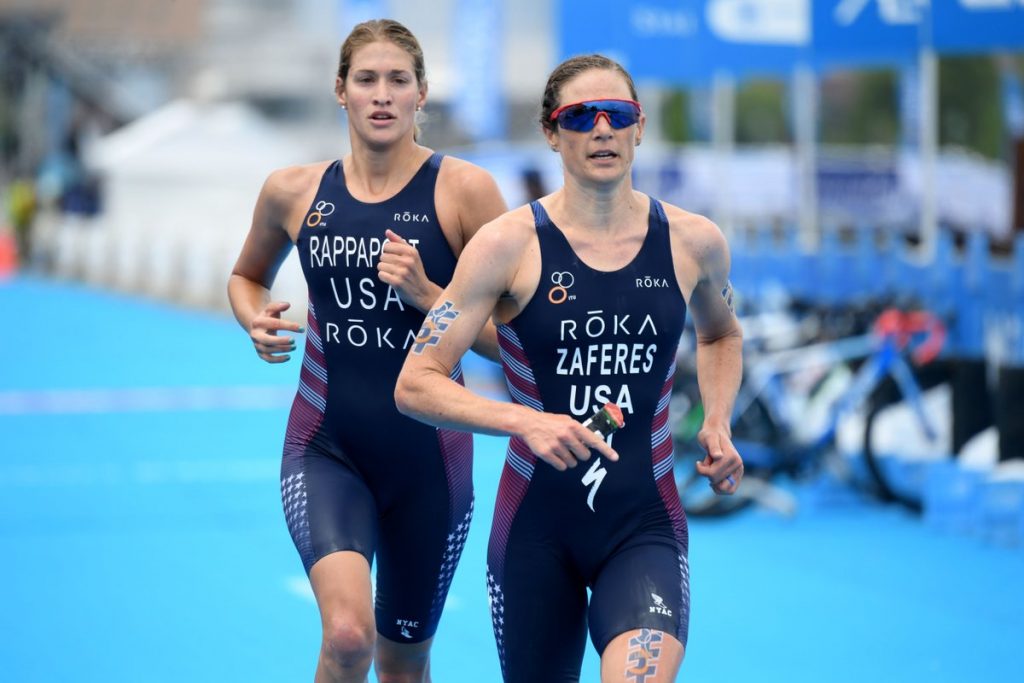
Athletes with an outsider’s chance of making the team are Taylor Knibb, the 2018 U23 World Champion, Tamara Gorman who secured three WC podium place finishes in Cape Town, Banyoles and Karlovy Vary last year and Chelsea Burns, who whilst racing inconsistently last season has a lot of potential. However, with these three athletes being relatively younger it would be a bit of a shock for them to make the team unless some of the previously mentioned athletes withdrew from the team through injury or illness. But even if they don’t make Tokyo 2021 then expect these girls to be fighting hard for places on the plane to Paris and Los Angeles over the next two Olympic Cycles.
With such tremendous talent, it’s hard to select the two athletes who will race alongside Zaferes. Whoever it ends up being though will most certainly not be there in a supporting capacity and will be expected to race hard to earn what may be a clean sweep of the podium for American women.
The Mixed Team Relay
For me this is quite a straightforward selection process. Katie Zaferes and Matt McElroy both have experience racing as part of the relay squad and have both been strong. Zaferes has an unmatched range amongst the pro women and will likely lead her leg. I would also bet money on Ben Kanute and Taylor Spivey, with their experience in the Super League series to make up a team that will challenge for gold. This is probably the area where the US will be most hard pressed to win, with Australia the Commonwealth Games Champs and World Champions France likely to push them to the very end. In a tight battle, I would back McElroy to outrun Birtwhistle or Bergere on the anchor leg.
Why are the Americans so good?
Whilst there are several reasons behind the strength in depth of the US team, including their large population, one of the main reasons I believe that the athletes are so great is because they are relatively latecomers to the sport. Most are picked up at the age of 21 – 23 straight out of college by the USATF recruitment drive, and nearly all of them have exceptional single discipline ability. In addition to this, I think that after the main development phase, an absence of a centralized USA program allows the individuals to become better-rounded athletes. All the triathletes are in different groups – Katie Zaferes trains under Joel Filliol, McElroy and Hemming are members of the Origin Squad whilst McDowell trains alongside Olympic Test event winner Tyler Mislawchuk under Triathlon Canada top dog Jono Hall. Spivey, Burns and Rappaport are all coached by the legendary Paulo Sousa. The diversity of coaching methods and training philosophies are almost certainly shared between the US team members, which creates a large pool of knowledge for the athletes to learn from.
Every year since 2016, the US team just seems to grow stronger. Barring disaster, the US are likely to double their previous medal count by the very least. Keep a lookout in Tokyo.
